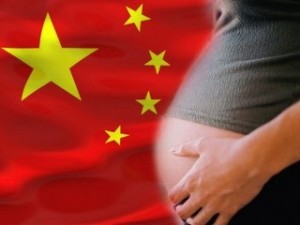 In the mid-eighties I met with Elliot Abrams, who was then serving as Assistant Secretary of State for Human Rights, to call his attention to the victims of China’s one-child policy. I told him that massive numbers of forced abortions and forced sterilizations had occurred in China over the past few years as the Communist Party sought to control childbearing under a state plan. Abrams included my evidence in his next annual State Department Report on Human Rights, and subsequent reports down to the present day have never failed to include a section on such abuses.
In the mid-eighties I met with Elliot Abrams, who was then serving as Assistant Secretary of State for Human Rights, to call his attention to the victims of China’s one-child policy. I told him that massive numbers of forced abortions and forced sterilizations had occurred in China over the past few years as the Communist Party sought to control childbearing under a state plan. Abrams included my evidence in his next annual State Department Report on Human Rights, and subsequent reports down to the present day have never failed to include a section on such abuses.
Last year the Party leadership announced an end to the one-child-per-family restriction. Some observers naïvely thought that the move to a two-child-per-family policy would spell an end to coercion and put China’s millions of population control police out of work. In fact, Stanford University has even proudly announced an ambitious program to retrain these now “superfluous” population police as “child development experts.”
They should have asked me first. This is a very bad idea on several accounts.
First of all, the men and women of China’s population police are roundly hated in China. These are the shock troops of the one-child policy after all, the ones who for decades have been harassing and arresting, imprisoning and aborting the babies of mothers pregnant without government permission.
To think that couples would voluntarily invite these thugs into their homes, offering them tea and almond cookies while politely listening to them dispense advice on how to raise little Ah Ling is ludicrous. Not to mention that these same posers many have been responsible for the untimely death of Ah Ling’s younger brother or sister a few days before. They would be about as welcome as a businessman at a Bernie Sanders rally.
Second, as everyone in China knows, these same thugs are still storming the homes of couples suspected of conceiving an illegal third child. As this year’s State Department report confirms, China is still enforcing “a coercive birth-limitation policy that, despite the lifting of one-child-per-family restrictions, in some cases resulted in forced abortion (sometimes at advanced stages of pregnancy).” [1]
The number of abortions performed each year in China may be more than even I had thought. China’s National Health Population and Planned Birth Commission reports that 13 million unplanned pregnancies are terminated annually. But this year’s State Department report adds that “at least an additional 10 million chemically induced abortions were performed in nongovernment facilities.” This brings the total number of unborn children killed annually in China to 23 million, a truly staggering number. [2]
How many of these abortions were forced on women? “Government statistics on the percentage of all abortions that were non-elective was not available,” reports the State Department. [3] I doubt if the humorless bureaucrats who drafted the report intended this sentence to be read tongue in cheek, but it made me laugh out loud anyway. Of course that Chinese government is not going to admit to committing even one forced abortion, much less to the millions that it actually carried out.
On a more sobering note, the World Health Organization (WHO) estimates that there are 40-50 million abortions performed worldwide each year. With 23 million of these abortions occurring in China, it would seem that the PRC, with only 20 percent of the world’s population, accounts for roughly 50 percent of the world’s abortions.
Such reckless disregard for the sanctity of human life, such wanton destruction of tens of millions of unborn children, must be counted as one of the costs of China’s continuing Planned Birth policy. Even if they didn’t force each and every one of those 23 million women to have an abortion, they certainly encouraged them to.
___________________________



